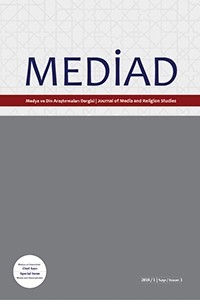OIC and IPHRC Efforts to Counter Islamophobia
The concept of Islamophobia is commonly known as a condition of phobia vis-a-vis Islam and Muslims, which develops into hostile behavior, including verbal and physical abuse against Muslims, their scripture, holy personalities, and symbols including assault against mosques, cemeteries, and religious centers. The Runnymede Trust, a British think-tank, holds that the “animosity harbored against Islam and Muslims in Western societies is unique and can only be grasped using an equally unique concept, hence the justification of the term Islamophobia” (Conway & Runnymede Trust, 1997).
In the aftermath of the 9/11 terrorist incident, Islamophobia is no longer viewed as a spontaneous reaction towards Muslims by isolated groups. Instead, it is transformed into a systematic anti-Muslim rhetoric of right-wing extremists propagated through well-designed and equally well-orchestrated media campaigns to achieve well-defined political gains. Although Islamophobic sentiments have gained traction, particularly after the events of September 11th, their origins can be traced back to much earlier periods, giving rise to problematic perceptions. Muslims are being subjected to pandemic of hate and negative stereotyping through different media platforms. Life for them, in some of these parts of the world, has become a constant struggle. They are living under fear of retaliatory attacks and being discriminated for maintaining their religious identity. This is happening under brutal occupation regimes in Palestine and Indian-occupied Kashmir and equally in democratic societies under the garb of “Laicite” (Wintour, 2020). Consequently, hate crimes against Muslims or even those who “look Muslims” have soared exponentially, especially, in parts of Europe, North America, and Asia. Muslims, in different parts of the world, whether living under occupation or as minorities and communities, are besieged and are under assault.
OIC and IPHRC Efforts to Counter Islamophobia
The concept of Islamophobia is commonly known as a condition of phobia vis-a-vis Islam and Muslims, which develops into hostile behavior, including verbal and physical abuse against Muslims, their scripture, holy personalities, and symbols including assault against mosques, cemeteries, and religious centers. The Runnymede Trust, a British think-tank, holds that the “animosity harbored against Islam and Muslims in Western societies is unique and can only be grasped using an equally unique concept, hence the justification of the term Islamophobia” (Conway & Runnymede Trust, 1997).
In the aftermath of the 9/11 terrorist incident, Islamophobia is no longer viewed as a spontaneous reaction towards Muslims by isolated groups. Instead, it is transformed into a systematic anti-Muslim rhetoric of right-wing extremists propagated through well-designed and equally well-orchestrated media campaigns to achieve well-defined political gains. Although Islamophobic sentiments have gained traction, particularly after the events of September 11th, their origins can be traced back to much earlier periods, giving rise to problematic perceptions. Muslims are being subjected to pandemic of hate and negative stereotyping through different media platforms. Life for them, in some of these parts of the world, has become a constant struggle. They are living under fear of retaliatory attacks and being discriminated for maintaining their religious identity. This is happening under brutal occupation regimes in Palestine and Indian-occupied Kashmir and equally in democratic societies under the garb of “Laicite” (Wintour, 2020). Consequently, hate crimes against Muslims or even those who “look Muslims” have soared exponentially, especially, in parts of Europe, North America, and Asia. Muslims, in different parts of the world, whether living under occupation or as minorities and communities, are besieged and are under assault.
___
- Considine, C. (2017). The racialization of Islam in the United States: Islamophobia, hate crimes, and “Flying while brown”. Religions, 8(9), 165. https://doi.org/10.3390/rel8090165
- Conway, G., & Runnymede Trust (Eds.). (1997). Islamophobia, a challenge for us all: Report of the Runnymede Trust Commission on British Muslims and Islamophobia. The Runnymede Trust.
- IPHRC. (n.d.). IPHRC-The Independent Permanent Human Rights Commission. Retrieved 5 June 2023, from https://oic-iphrc.org/home/post/1
- IPHRC. (2017). Outcome document of the 4th International seminar of the OIC Independent Permanent Human Rights Commission. IPHRC. https://oic-iphrc.org/en/data/docs/seminars/568730.pdf
- Hohlmeier, M. & Stevens, H. (2018). Draft report (PE621.073v01-00). Retrieved 5 June 2023, from https://www.statewatch.org/media/documents/news/2018/jul/ep-special-cttee-terrorism-draft-report.pdf
- Organisation of Islamic Cooperation. (n.d.). History. Retrieved 5 June 2023, from https://www.oic-oci.org/page/?p_id=52&p_ref=26&lan=en
- press.un.org. (2022, March 15). General Assembly unanimously adopts texts on combating Islamophobia, protecting rangelands, tackling difficulties for widows, bicycles as public transportation, UN Press. Meetings Coverage and Press Releases. https://press.un.org/en/2022/ga12408.doc.htm
- United Nations Human Rights Council. (2011). Combating intolerance, negative stereotyping and stigmatization of, and discrimination, incitement to violence and violence against, persons based on religion or belief. United Nations. https://www2.ohchr.org/english/bodies/hrcouncil/docs/16session/a.hrc.res.16.18_en.pdf
- Wintour, P. (2020, October 26). Macron’s clash with Islam sends jolt through France’s long debate about secularism. The Guardian. https://www.theguardian.com/world/2020/oct/26/macrons-clash-with-islam-sends-jolt-through-frances-long-debate-about-secularism
